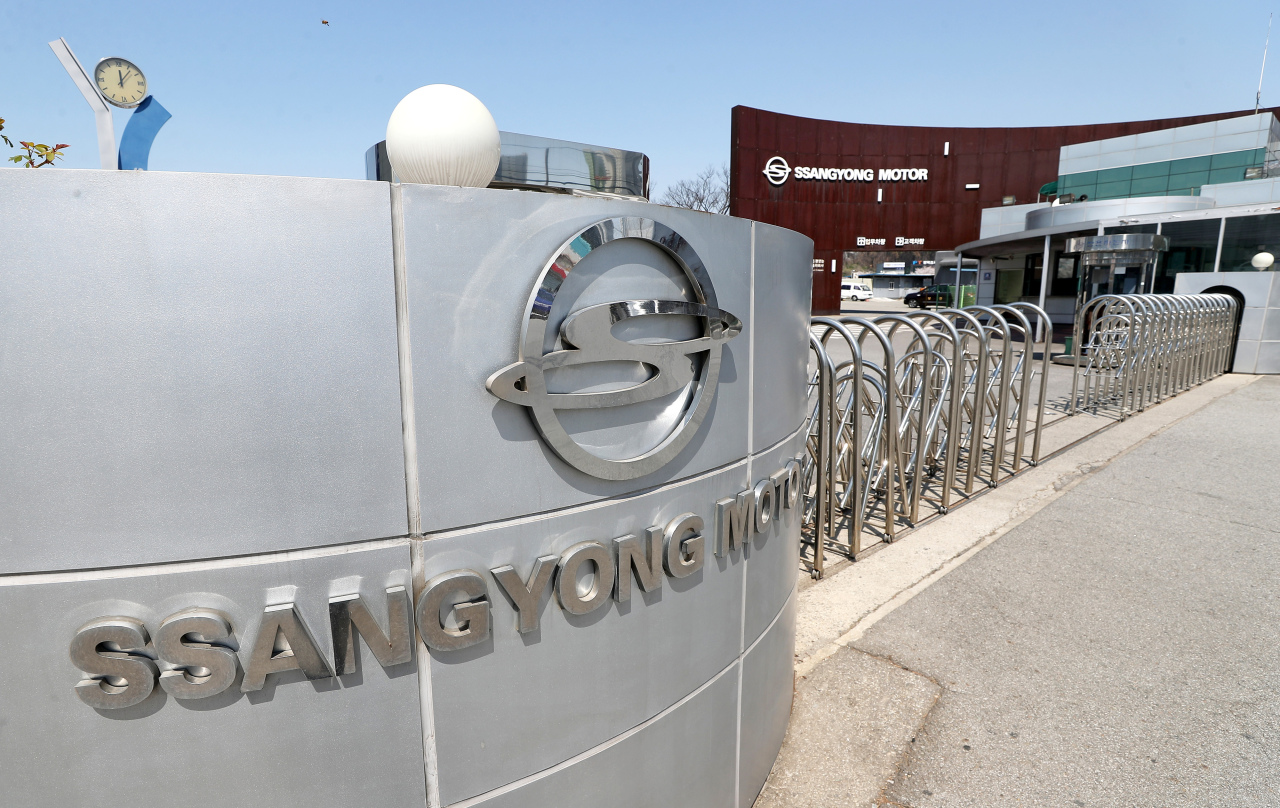 |
An exterior view of SsangYong Motor's Pyeongtaek factory in April. (Yonhap) |
Stocks of SsangYong Motor halted trading starting Tuesday as the cash-strapped automaker is now under bankruptcy court supervision and has effectively been given a three-month grace period before it enters court receivership.
Eyes are on whether SsangYong Motor to avoid the court-led rehabilitation proceedings by soliciting a new investor in that time.
On Monday, SsangYong Motor said it had applied for an autonomous restructuring support program, when filing for bankruptcy to Seoul Bankruptcy Court for the first time in 11 years.
The scheme -- a hybrid of in-court restructuring and out-of-court restructuring -- allows the bankruptcy court to postpone a commencement of rehabilitation proceedings for at least three months, so that the debtor firm and its creditors have a chance to negotiate, reduce or avoid a voluntary restructuring. Subsequently, the indebted firm will be able to keep business as usual and its shareholders will maintain its control during the negotiation.
The bankruptcy court first introduced the scheme in 2018, a year after it separated from Seoul Central District Court to become an independent court.
Once the debtor reaches an agreement with creditors, the debtor company may withdraw from court receivership. In SsangYong Motor’s case, soliciting a new shareholder that is prepared to inject capital -- with the most likely candidate being California-based automotive importer HAAH Automotive Holdings – could be one way to do so.
The program is meant to “put together debtors and creditors and offer them a negotiating forum,” said a spokesperson of Seoul Bankruptcy Court, adding that 15 companies had applied for the scheme before SsangYong Motor and seven of them had avoided bankruptcy.
For example, Seoul-based biologics drug maker Polus BioPharm in May withdrew its bankruptcy case upon reaching an agreement from its creditors. nine months after filing for bankruptcy through the autonomous bankruptcy support program. Clothing wholesaler TnJ reached a creditor-debtor agreement in December 2019 to avoid court-led restructuring, following a three-month program.
In case of a failure, the bankruptcy court will take control of the restructuring process of the lossmaking company, including debt write-offs.
Before trading was halted, shares of SsangYong Motor nosedived immediately after a news report on Monday late afternoon that the firm had failed to repay debts to creditors in a timely manner. SsangYong Motor closed 19.2 percent lower than the previous day‘s closing price. Over 110 billion won ($99 million) of its market cap evaporated within an hour.
This is the latest development of the company that has failed to roll over debts to a number of financial institutions.
SsangYong Motor stopped short of repaying a combined 60 billion won debt to foreign creditors JPMorgan, BNP Paribas and Bank of America that was due Dec. 14. Also, payments of 90 billion won to the state-run Korea Development Bank and 15 billion won to commercial lender Woori Bank are also overdue.
SsangYong Motor has been in the red for 15 quarters in a row until September. From January to September, SsangYong Motor logged a 308.9 billion won operating loss, more than the 281.9 billion won loss reported for the whole of 2019.
By Son Ji-hyoung (
consnow@heraldcorp.com)








